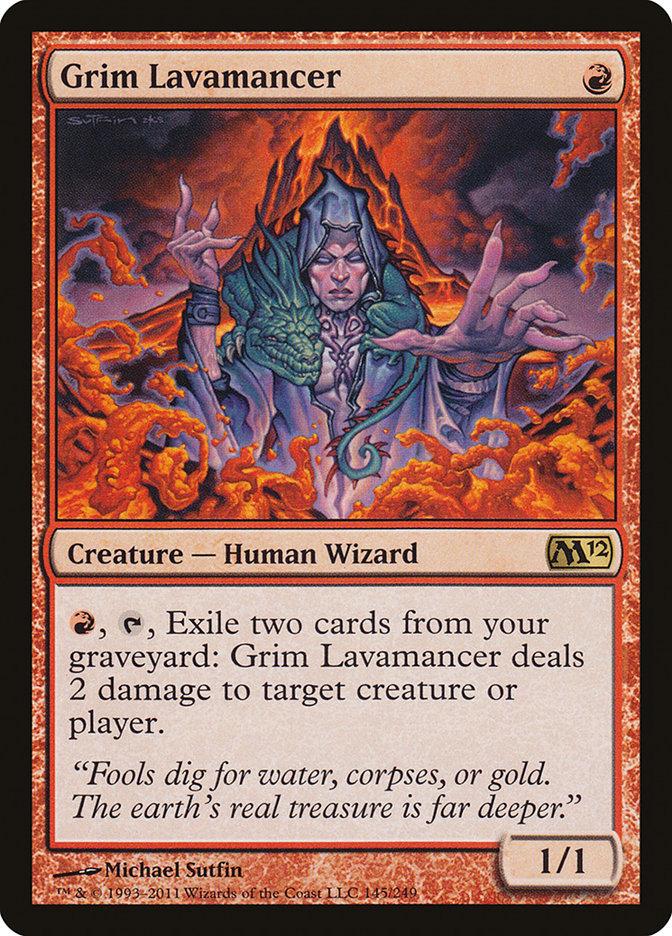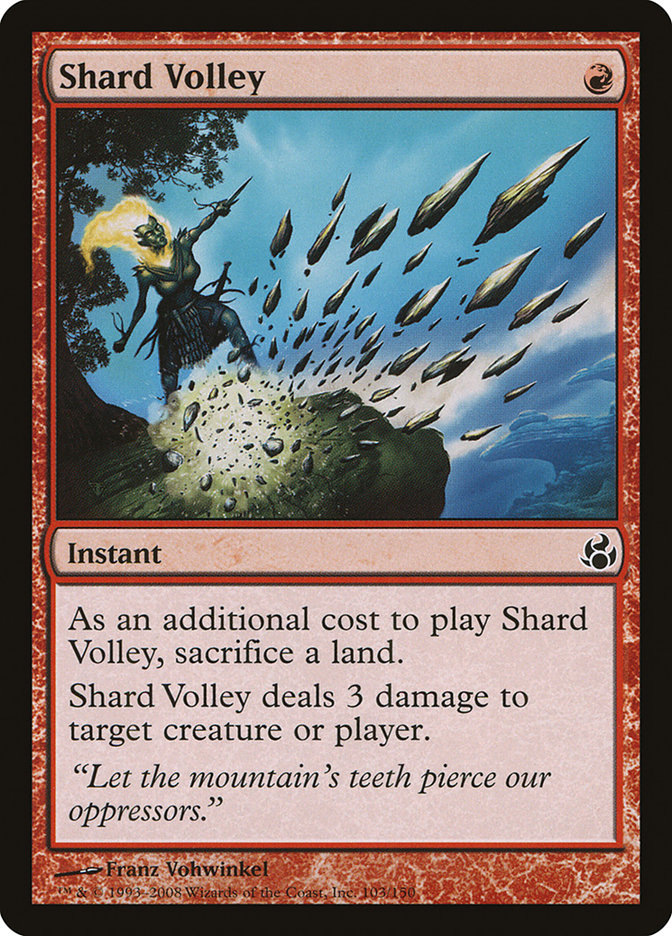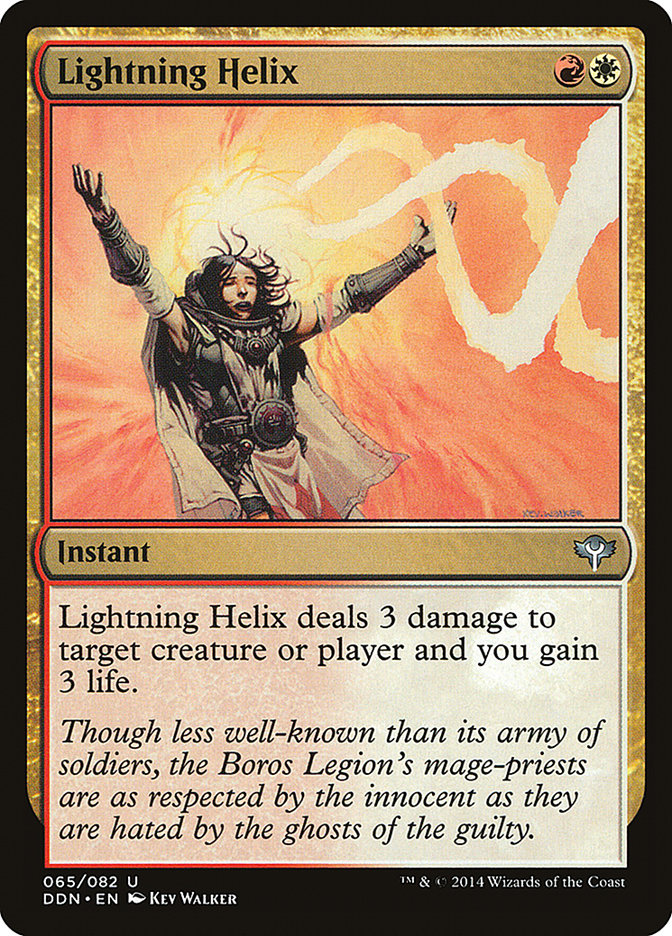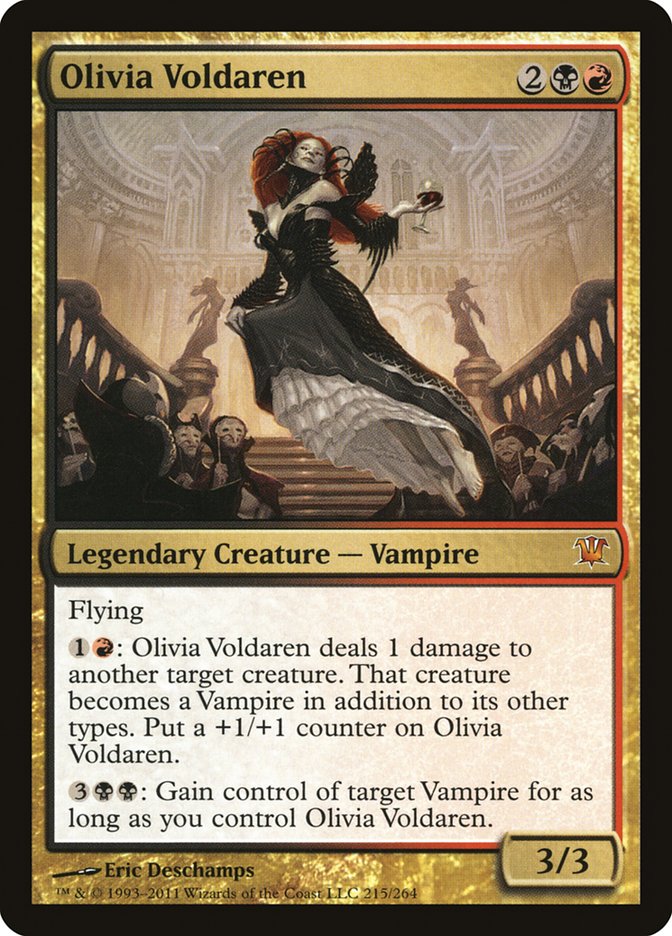Trying to get an edge in Modern is always a challenge. The format is wildly diverse – even more than Legacy is today – and while this is exciting, it makes for a difficult nut to crack.
If we look at all of the recent Modern events, you can get a pretty good picture of what is being played by looking at the cards being played.
Here are the top ten cards seeing play in Modern decks from the last two months:
Here is that same top ten from the last two weeks:
While there was a bit of jockeying for position, it’s probably not much of a surprise to see Fatal Push emerge so impressively; I even made the card a focus of my last article. If you look at that recent two-week list, literally the top four cards of Modern are basically the top three removal spells in Modern and a removal card that can also be a discard card.
If the results from the SCG Season One Regionals are any indication, this may be a very wise thing to do these days. Two of the three most successful decks are very much attack-phase decks.
All told, there were 29 separate archetypes that made a Top 8 of a Regional Championship – if you merge the G/X Tron lists into a single archetype. Three decks won more than one Regional Championship: Burn, Affinity, and Through the Breach.
Bringing Home the Trophies: Burn
Creatures (13)
Lands (20)
Spells (27)
- 4 Lightning Bolt
- 4 Lava Spike
- 2 Lightning Helix
- 4 Rift Bolt
- 1 Shard Volley
- 4 Searing Blaze
- 4 Boros Charm
- 4 Atarka's Command
Sideboard

Rayton Espiritu took home the crown in San Diego with a take on Burn that I can pretty fervently get behind. This is a list of nearly all four-ofs, with only a couple of significant exceptions.
Rayton ran a single Grim Lavamancer in the maindeck (with a second in the sideboard), giving himself access to this game-devastating card but not overloading the slot. If you’ve played as much Burn as I have, you’ve certainly had those games where you “flood” on Grim Lavamancer and basically have an inefficient creature that floats between a 1/1 and a 2/1 unblockable with a single-red-mana upkeep cost. In some formats, running two Grim Lavamancer is excellent. Running one is, to my mind, the most sensible number in any format that hasn’t demanded that you not bother or demanded that you give the card more attention than that.
Personally, if I don’t see exactly one Shard Volley in a Modern Burn deck, I usually suspect that the deck isn’t built correctly and I look to see if I can find any other choices that I’d think of as errors. The diminishing returns on Shard Volley are spectacular, and the card is basically not great unless it is the last spell in the game. However, in a world where you’re looking for all of the reliable three-damage-for-one-mana plays you can get, running less than one strikes me as cowardice and running more than one strikes me as foolhardiness.
The two-of Lightning Helix, to me, represent two open slots looking for a card. This is the place where the deck has more than a little play, where in some versions you might see the Skullcrack, the extra Grim Lavamancer, the Vexing Devil, the Searing Blood, or the other pet cards that make sense to the pilot. I can get behind Lightning Helix for one big reason: Burn and Affinity are two of the big targets of the metagame – at least if the past is any kind of prologue.
Espiritu’s sideboard is very meat-and-potatoes Burn: the extra Grim Lavamancer for when you might need to clean up the battlefield, Destructive Revelry to blow up anything cute, Deflecting Palm to punish the big damage cards, Path to Exile to clean up the hard-to-kill, Skullcrack for people’s plans to escape your damage, and Lightning Helix versus those who hope to put up a fight.
The deck’s mana is straightforward, gives easy access to its colors, and can be consistently counted upon. If you’re one of those people who feels like twenty lands is too many yet feel hesitant to run nineteen, you should always remember that options exist like Teetering Peaks, Keldon Megaliths, and Simian Spirit Guide to bridge the gap between the two counts.
This archetype not only won the most Regionals, bringing in three trophies, but it also was widely represented otherwise. Whether you love it or hate it, it’s clear that Fatal Push isn’t holding this deck down.
Final take: Be ready for it. Consider playing it.
More than the Rest: Jund
While Burn may have hoisted more trophies, Jund came through with more people in the Top 8 than any other archetype.
Is that at all surprising? When you look at a list of Jund, it basically reads like an assassin’s row of insanely powerful cards. Jund looks at the format like a bully on the beach trying to find sandcastles to kick down. Let’s check out one castle-kicker:
Creatures (13)
Planeswalkers (5)
Lands (24)
Spells (18)

Matt Puls came with a build that is quite straightforward. Very nearly every card choice was firmly within the realm of what we’d expect to see in any particular Jund deck. The selection of disruption and removal takes into account the diminishing returns of each card, their places on the mana curve, and the likely frequency of removal demanded by the format. Marching into an onslaught of that removal with a creature deck is a frightening proposition.
Puls, like each of the Jund pilots who reached the semifinals, relied on Huntmaster of the Fells as his high-mana card of choice, as opposed to cards like Pia and Kiran Nalaar and Kalitas, Traitor of Ghet. This makes a lot of sense if Burn is Public Enemy Number One and Jund is the most likely opponent at the top of the field.
Most exciting for me is a card that absolutely crushed me in a League earlier this week:
I often forget that this card exists. I shouldn’t. Olivia is a fantastic play in a long slog or when you shift into playing a more controlling role. She gets out of hand extremely rapidly and can make the card advantage offered by a card like Renegade Rallier seem quaint. This card feels good enough to consider in the maindeck these days, though it falls just a little short; the metagame is probably just a bit too diverse for the card right now.
If anything, Jund’s real weakness in this metagame can perhaps be summed up by something simple: it placed ten people into a Top 8, but nearly none of them advanced. This is in part because kicking people’s sandcastles down isn’t as frightening as threatening the game on fully different axes than Jund presents. Jund says, “Card for card, I got this.” The other successful decks say something different. They say, “Y’all ready for this?”
Remember that archetype count from before? 29 archetypes is a lot to reckon with. Burn very much attacks on an angle not like other decks, as does Tron, Goryo’s Vengeance, W/R Prison, or Living End, not to mention the many others that do. Being pound-for-pound, card-for-card the best deck feels like a difficult decision to pull the trigger on when you could be fighting opponents
Final Take: Be ready for it. Only play it if you’ve specialized in it and know the deck inside and out.
Above Expectations: Through the Breach
The big-mana, big-play decks are the real deal. While usually you might be accustomed to thinking about Tron as the king of making the big play, at Regionals it was Through the Breach that made the big splash, taking two trophies, while Tron was left on the sidelines with none, no matter how Tron was configured.
Creatures (14)
- 4 Sakura-Tribe Elder
- 4 Simian Spirit Guide
- 1 Emrakul, the Aeons Torn
- 1 Obstinate Baloth
- 4 Primeval Titan
Lands (25)
Spells (21)

This is a straightforward deck. There are four copies of everything essential, a one-of to tutor for, and a singleton Emrakul, the Aeons Torn as an extra Through the Breach enabler, with the rest of the spaces filled out by three copies of Summoner’s Pact (limited by diminishing returns) and a pair of Anger of the Gods to help keep the deck alive.
This deck is very, very good at pulling ahead on cards, but doing it with the most resilient card type in the game: lands. Primeval Titan is a very messed-up card, and simply putting it onto the battlefield is often enough to win the game, let alone using it to attack the turn it hits the battlefield with two triggers that will likely have won the game.
Turnbull’s list isn’t doing anything cute, with everything basically fairly straightforward. The two Sudden Shocks in the sideboard do great work against Affinity and are serviceable against Burn, but they may be less necessary moving forward given the relative nonexistence of Become Immense or Puresteel Paladin.
Without Puresteel Paladin making a big splash, there are still reasons to consider Chalice of the Void in the deck: it is great versus Burn, reasonable against Serum Visions decks of all kinds, and a decent catch-all against most combo decks. I expect to see this deck still play Chalice in the future, but I could easily see it getting cut in a future iteration.
Final Take: Know it exists, know how it works, and test against it a bit, but not exhaustively. Absolutely consider playing it if you’ve the inkling.
The Odd Ones: Miscellany
Here are a few odds and ends that made me clap my hands in delight.
Creatures (7)
Planeswalkers (6)
Lands (22)
Spells (25)

We’ve come a long way since Stuffy Doll.
Chandra, Torch of Defiance and Koth of the Hammer are an awesome duo, and it is exciting to see a deck running both. They form the core of the midgame of this powerful deck, along with Pia and Kiran Nalaar, any of which can hit play on turn three thanks to Mind Stone.
The real reason that this deck is seeing any play whatsoever, though, is almost certainly this card:
Few cards can shut down another player’s fun like Blood Moon. Combine Blood Moon with copious amounts of removal and the Skred Red opponent can simply cease playing. The deck also includes Relic of Progenitus to potentially knock out an entire strategy, though it is mostly there to make knocking out Tarmogoyf reasonable.
Final Take: It’s worth knowing this deck exists, but I wouldn’t spend time playtesting with it or against it unless you are enamored with the deck.
On the other end of the mono-colored oddball spectrum, you have Soul Sisters.
Creatures (26)
- 4 Soul Warden
- 2 Auriok Champion
- 4 Ranger of Eos
- 4 Soul's Attendant
- 4 Serra Ascendant
- 4 Ajani's Pridemate
- 4 Archangel of Thune
Lands (24)
Spells (10)

I can see the elements of this particular build that make it worth playing. In many ways, this is a White Weenie variant, preparing for a very, very short game. Archangel of Thune feels like it acts like a super-charged pump spell that will end the game immediately (or shortly thereafter). With that in mind, though, it is disappointing to me that the deck didn’t push the aggro element with a card like Champion of the Parish or Honor of the Pure or do more with the red mana than it did, though I may be biased.
The sideboard of this deck is chock-full of obscenely powerful cards, and one has to imagine that Derek Meyers won more sideboarded games than game ones. Only Blessed Alliance feels “okay,” with every other card looking like a nuclear weapon.
Final Take: Look at the list and leave it at that. If you love the idea, you already have your own build built, and don’t let me stop you.
Now to the most unusual list in the Regionals Top 8s:
Creatures (12)
Planeswalkers (1)
Lands (23)
Spells (24)

I’m smiling just thinking about Pack Rat and Goblin Rabblemaster seeing some play. You know things have gone a bit wild when those cards are refreshing to see rather than groan-inducing.
Really this deck looks like it has most of the pieces of a solid Jund deck, and then made the mana more resilient so it could use and cast Blood Moon, all while finding replacements for Tarmogoyf so that you can kill quickly. Four Fatal Push join four Lightning Bolt at the one-drop slot, but otherwise, the removal and discard package is about exactly what you’d expect from any ol’ Jund list.
Playing Blood Moon in a package like this feels unfair. Blood Moon is already a very powerful card, but being able to force it through with Inquisition of Kozilek and Thoughtseize is incredible. Using that discard to make for a more hospitable game state is also a real way that games will go, and that is just fine, but a bit less exciting than the “protect the queen” style that comes from forcing out a spell.
Mutavault is a luxury that a two-color deck can afford and it is an incredible card to see play alongside Pack Rat. To me, that inclusion is a good sign that Logan Pressely did some thinking about his options.
The conservative elements to this deck, I really appreciate. This deck is, despite its apparent strangeness, doing something very well-defined by past successful decks; it is just taking advantage of the depths of the card pool to manage that feat in two colors. To me, this hearkens back twenty years to Sol Malka’s “Randall,” and it is unsurprising that the concept works.
Final Take: Playing against this deck will feel remarkably similar to playing against most of the classic G/B(/x) midrange decks like Jund and Abzan and friends. If you’re a Jund Player but you want to be a hater, this would be a worthwhile switch.
I won’t be in Baltimore this weekend. If you’re looking to cheer me on in some Modern Magic, I’ll be in Vancouver, piloting whichever deck managed to win my heart for the weekend. If you’re playing somewhere, good luck. If you’re not, wish me luck!









